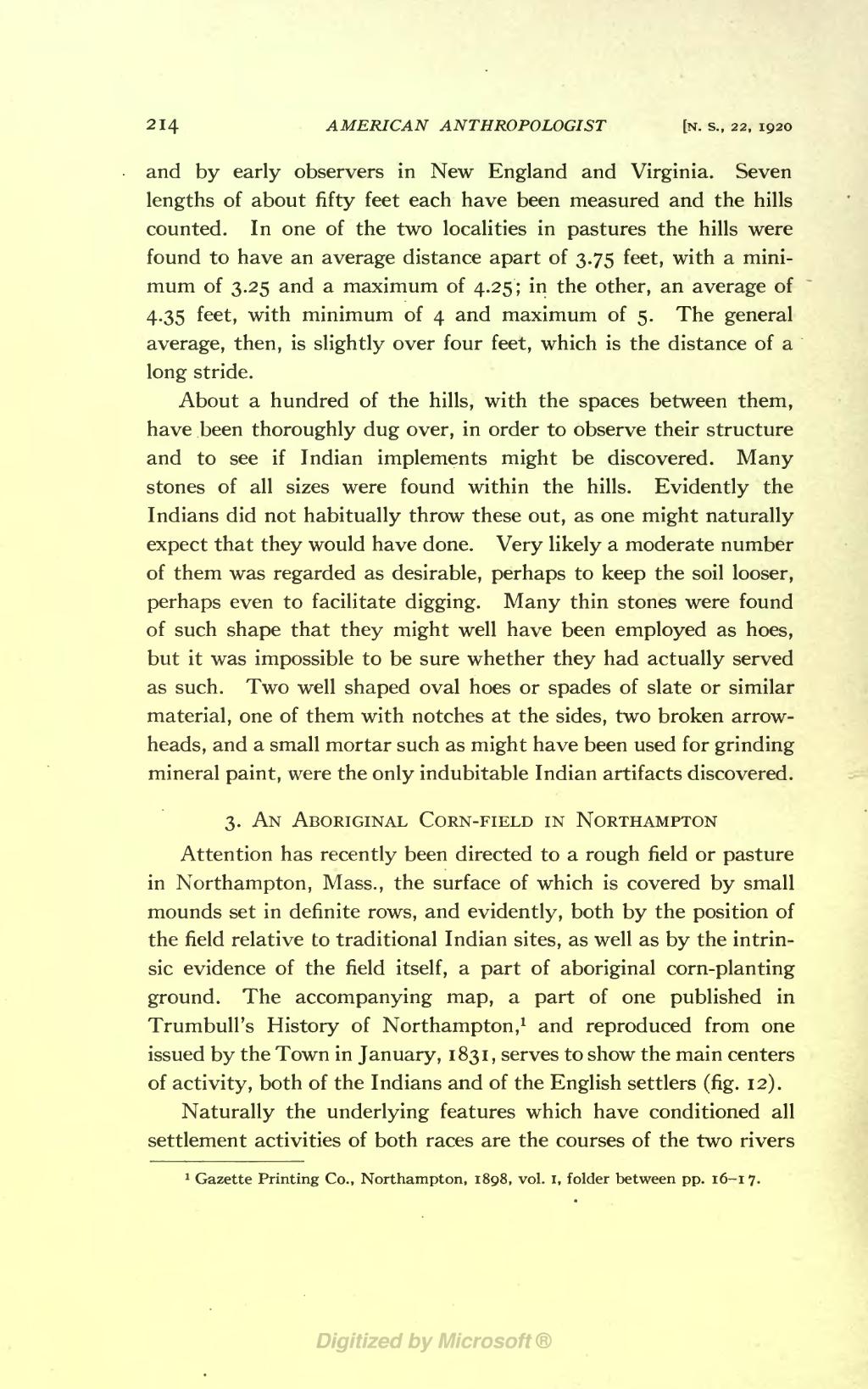214 AMERICAN ANTHROPOLOGIST [N. s., 22, 1920
and by early observers in New England and Virginia. Seven lengths of about fifty feet each have been measured and the hills counted. In one of the two localities in pastures the hills were found to have an average distance apart of 3.75 feet, with a mini- mum of 3.25 and a maximum of 4.25; in the other, an average of 4.35 feet, with minimum of 4 and maximum of 5. The general average, then, is slightly over four feet, which is the distance of a long stride.
About a hundred of the hills, with the spaces between them, have been thoroughly dug over, in order to observe their structure and to see if Indian implements might be discovered. Many stones of all sizes were found within the hills. Evidently the Indians did not habitually throw these out, as one might naturally expect that they would have done. Very likely a moderate number of them was regarded as desirable, perhaps to keep the soil looser, perhaps even to facilitate digging. Many thin stones were found of such shape that they might well have been employed as hoes, but it was impossible to be sure whether they had actually served as such. Two well shaped oval hoes or spades of slate or similar material, one of them with notches at the sides, two broken arrow- heads, and a small mortar such as might have been used for grinding mineral paint, were the only indubitable Indian artifacts discovered.
3. AN ABORIGINAL CORN-FIELD IN NORTHAMPTON
Attention has recently been directed to a rough field or pasture in Northampton, Mass., the surface of which is covered by small mounds set in definite rows, and evidently, both by the position of the field relative to traditional Indian sites, as well as by the intrin- sic evidence of the field itself, a part of aboriginal corn-planting ground. The accompanying map, a part of one published in Trumbull's History of Northampton, 1 and reproduced from one issued by the Town in January, 1831 , serves to show the main centers of activity, both of the Indians and of the English settlers (fig. 12).
Naturally the underlying features which have conditioned all settlement activities of both races are the courses of the two rivers
��Gazette Printing Co., Northampton, 1898, vol. I, folder between pp. 16-17.
�� �
